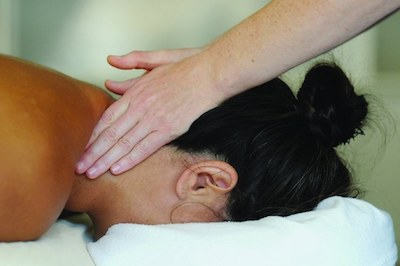NOTE ABOUT OSM MISSION
The Oregon School of Massage (OSM) mission is to provide massage training within the broader context of mind/body/spirit integration. A necessary component of that integration is the development of awareness of self and other. Mindfulness is the synonymous term which is increasingly being used in professional circles (e.g., education, medicine, psychology) and often appears in the titles of articles, books, and trainings.
OSM is fortunate to have several staff members experienced in different mindfulness practices. Our Kinesiology instructor, Paul Gerhards, is one of them. He has graciously shared with us the refreshing and informative article which he posted on his own website.
__________
MINDFULNESS
By Paul Gerhards
Mindfulness, as a tool to reduce stress, is in great supply these days. A Google search on the word just now returned 15,400,000 results. Among them are myriad stories of the successful use of mindfulness practice in classrooms and in boardrooms around the world. Talk therapists use their training in Mindfulness Based Stress Reduction—developed by Jon Kabat-Zinn—to help their clients overcome anxiety, and the same principles are used in hospitals to help patients handle pain.
The subject of mindfulness is, of course, the mind. The mind—yours and mine—when not occupied with a very specific task, is usually in one of two places. Either it is in the past, reflecting on experiences; or in the future, anticipating what will happen next. While in either one of these places, the ordinary mind oscillates between confidence and doubt, joy and sorrow, pleasure and pain, humor and anger, love and hate, serenity and anxiety, and so many other conflicting states. These mind states influence what you do and how you carry your actions and attitudes into the world.
Mindfulness is being aware of what is happening now—internally, within the mind itself, and externally with what you are touching, seeing, hearing, smelling, and tasting. With mindfulness, you can place yourself right between past and future. It’s a small but stable platform from where you can respond to events as they unfold and without preconceived notions formed by past experiences and future expectations. The external world of sensory objects doesn’t change, nor do the sensations you experience, regardless of whether they are pleasant or unpleasant experiences. What does change are your habitual responses. In that tiny gap between past and future, you can make a choice that is not based solely on liking and disliking or on emotions. Rather, you can choose the best response based on what’s appropriate. Mindfulness is a rational and pragmatic approach to experience.
Mindfulness is a skill that, like any other, can be developed. And, as with developing any other skill, it takes lots of patience and practice. The practice hall for mindfulness is meditation. Mindfulness meditation is not prayer, nor does it attempt to transcend anything divine. It’s not a way of processing information, solving problems, or stimulating creativity. Nor is it an escape from reality or a dive into some blissful care-free state of nothingness. It’s simply focusing on an object—typically the breath—and bringing your attention back to it over and over to stay present with reality as it unfolds.
Just about anything can be a meditation object (sounds are especially good), but the breath is best because it’s always with you. The breath is a direct connection with the body. Unlike the mind, which can wander aimlessly between past and future, the body is always in the present. Where else can it be?
When mindfulness is well-developed, and you can easily remember to bring your awareness back to the moment, you can choose beneficial thoughts, words, and actions over harmful ones. Taking the time to rest in the space between past and future, you can stay balanced and not be influenced by the forces of liking and disliking or unbridled emotions. You can more easily avoid mental states that lead to anxiety and stress and cultivate ones that lead to well-being.
A well-developed mindfulness practice can break up old, potentially harmful habits and replace them with beneficial ones. Breaking mindless habits and patterns is not easy work, but it is beneficial work. After a while you will notice a differences. And others will, too.
________
CONTACT INFORMATION
To find out more about Paul check his websites at: http://paulgerhards.com
Also see our earlier blog aboout him: http://oregonschoolofmassage.com/blog/2011/03/110/
Check the OSM calendar ..”Intro To Mindfulness for LMT’s” coming November 5 in Salem.





Yes, mindfulness does work. It changes the way you can look at anything. A way of broadening awareness. A massage therapist can invite a client into mindfulness by helping them pay attention to their breath or the tension and pain in their body that they came to see you for. The client can see how bringing attention to the body can shift the experience they are having. It is very empowering.
Yes, mindfulness does work. It changes the way you can look at anything. A way of broadening awareness. A massage therapist can invite a client into mindfulness by helping them pay attention to their breath or the tension and pain in their body that they came to see you for. The client can see how bringing attention to the body can shift the experience they are having. It is very empowering.
Thanks for such a great reminder about being in the present moment!
Thanks for such a great reminder about being in the present moment!